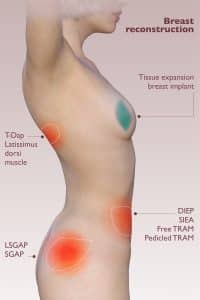Why should you avoid Lat pulldowns and pull-ups after undergoing a LAT Flap breast reconstruction

The surgical technique used for the lat flap reconstruction can impact how the muscle functions post-surgery. In some cases, the muscle may be partially detached from its original location, and its function may be altered. In other cases, it may remain partially connected to its original location, allowing it to maintain some degree of movement and function.
The surgical technique used for the lat flap reconstruction can impact how the muscle functions post-surgery. In some cases, the muscle may be partially detached from its original location, and its function may be altered. In other cases, it may remain partially connected to its original location, allowing it to maintain some degree of movement and function.
Scar tissue formation and healing at the surgical site can also affect how the reconstructed breast behaves during muscle contractions. Scar tissue can limit the flexibility and movement of the tissue, potentially impacting how the breast responds to muscle activity.
The degree to which the reconstructed breast contracts or moves during a lat pulldown will vary among individuals. It can depend on the factors mentioned above, as well as the person’s overall health, physical condition, and the time elapsed since the reconstruction surgery.
When performing a pull-ups or a lat pulldown there is chance that the latissimus muscle, that is now positioned in the chest, will contract concentrically and eccentrically. This can wreak havoc on the new breast symmetry and cosmetic result as well as result in an even greater muscle imbalance between the anterior and posterior sides of the body. A better choice would be exercises that focus on scapular stabilization. Keep in mind that wrapping an exercise band around the affected arm may increase the risk of lymphedema by restricting circulation and lymphatic flow.

It’s important for individuals who have undergone a lat flap reconstruction to consult with their healthcare team and discuss any concerns or questions about how their reconstructed breast may respond during specific exercises as well as obtaining a medical clearance.
